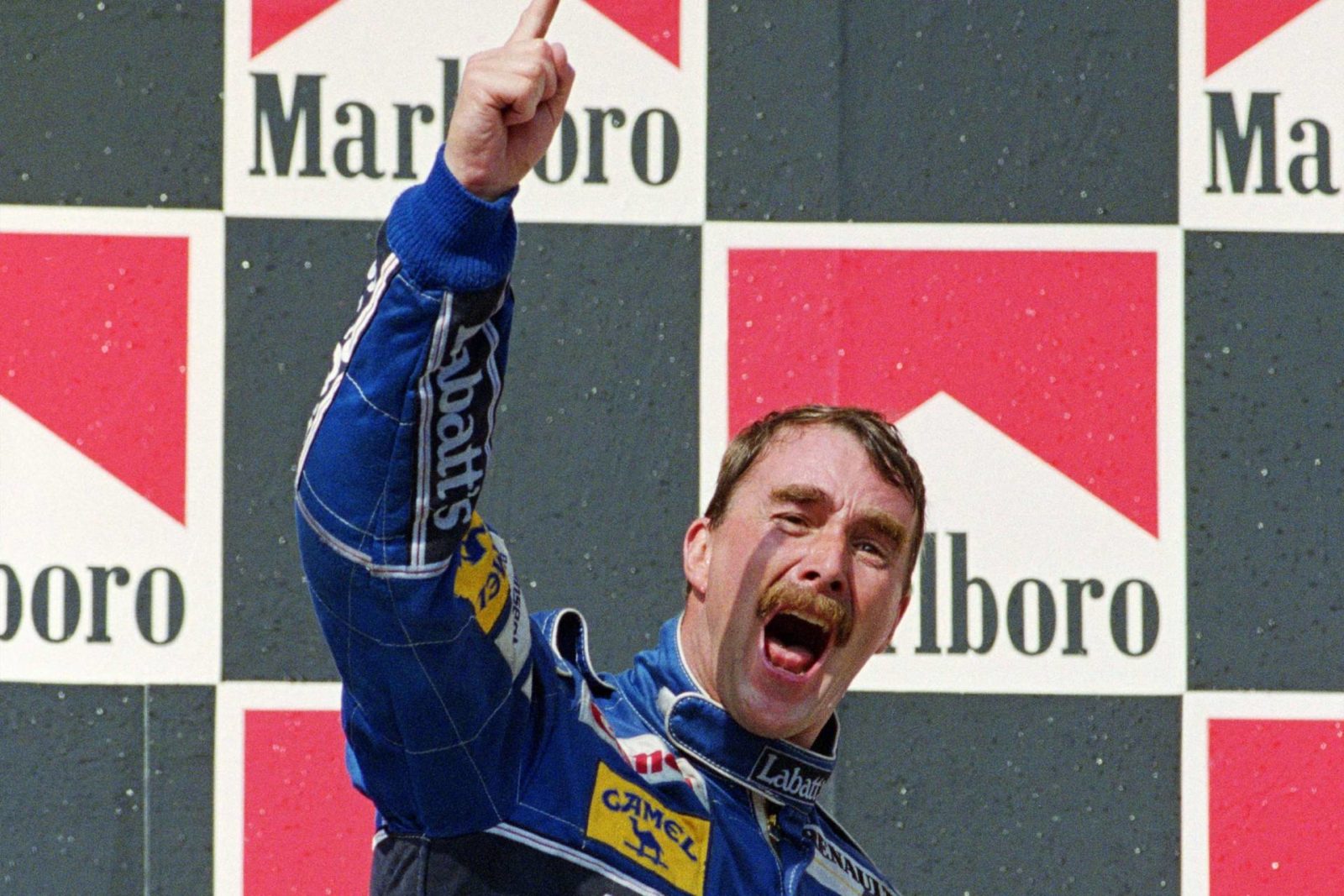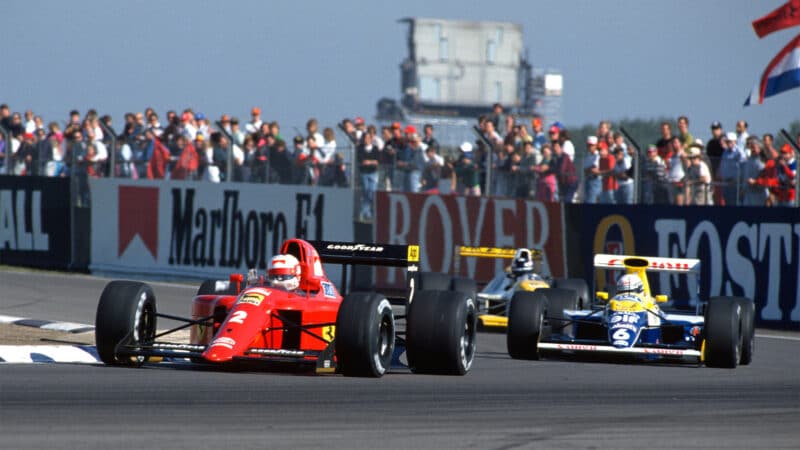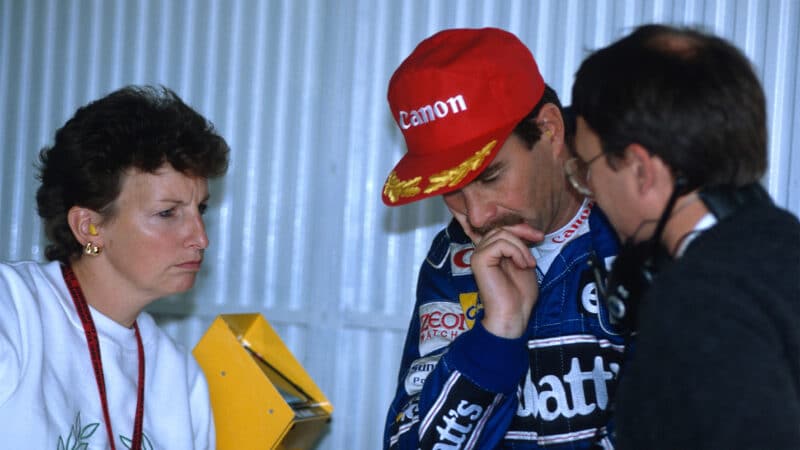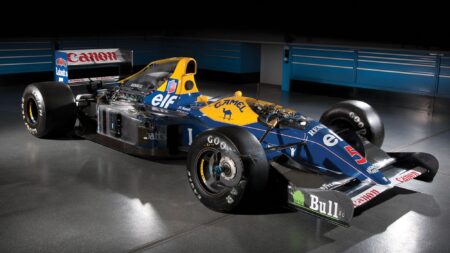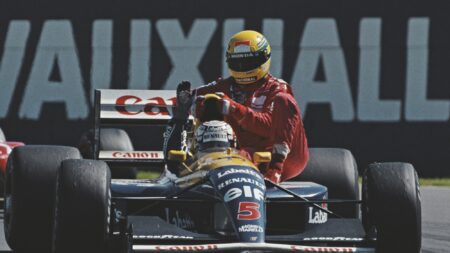It is the theatricality that starts to grate when you are close to Mansell for any length of time, the ‘speaking to you as a person…’ the ‘all I can say is that…’ or the ‘speaking with my police cap on…’ prefaces. The on-record stuff that later becomes off-record. And the inferiority complex, the hard-done-to attitude. This from a man now worth millions. You begin to understand why one senior Williams management figure once said of him: “It’s a shame you can’t just helicopter him from his hotel, plant him in the cockpit, and then just helicopter him away again immediately afterwards…” Like the long-gone Indianapolis star Eddie Sachs, Mansell loves to be loved, needs to feel appreciated. He feeds off sympathy, surrounds himself with acolytes (collectively known within the F1 fraternity as Brown Five, in deference to his racing number, Red Five). In the car he gives his all, but he needs to know that the effort has been fully recognised and appreciated. To understand the man, you have to understand that. At times it smacks of almost endearing vulnerability, but it can be akin to having to assure a friend continually that he still is a friend. The constant struggle to prove himself left an indelible scar on a sensitive personality, and no amount of subsequent success seems to have been able to heal it.
Balanced against the histrionics, though, there is always the bravery, and Nigel Mansell is Brave. I remember watching spellbound at Brands Hatch in 1983 as he literally fought the appalling Lotus 93T around during the Race of Champions in the automotive equivalent of alligator wrestling. It was a terrible car, but there was absolutely no questioning the commitment with which he willed it over Brands’ notorious bumps and dips.
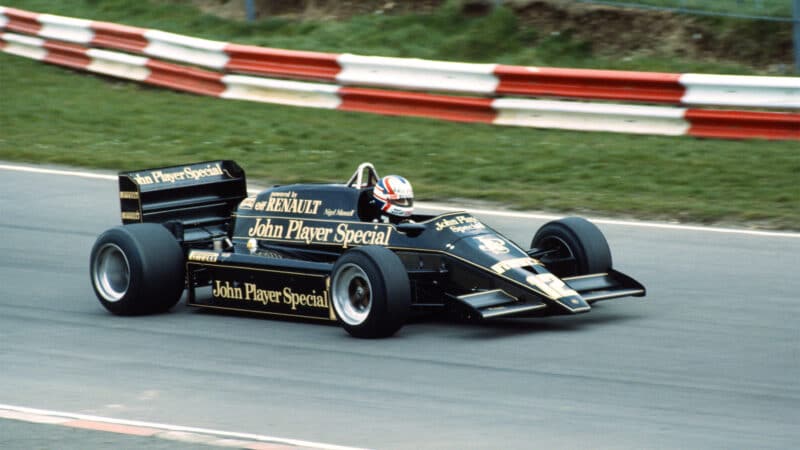
Mansell wills the Lotus 93T around Brands Hatch in 1983
Grand Prix Photo
His pole-winning laps at Silverstone in 1990 and 1991 were also awesome as he balanced his machinery right on the very edge. So too was the move he pulled on Berger in Mexico in 1990. But for me it was a competition in which John Player pitted one of its racing cars against one of its racing catamarans at Holme Pierrepoint in 1982, that really illustrated the depth of his competitive commitment. He and Bob Spalding indulged in a series of drag races, which was fine for Bob since HoIme Pierrepoint is a watersports park, but Mansell only had a narrow path to run down, and grass at either end of it to act as run-off and braking area. Despite that he didn’t bat an eyelid, and would nonchalantly spin his Lotus 91 to a halt at the end of each pass. Three litres of Cosworth V8 propelled him to 116mph in 5.4s compared to three and a half litres of Johnson V8 pushing Spalding’s Velden to 100 in 5.7s. It was only a fun contest, but he was determined to win and he did. Sadly, 10 years later he would let himself down very badly with his lack of grace during a Camel F1 quiz staged at the British GP, between his team of journalists and Martin Brundle‘s, which won.
Brave, too, was his drive from the pit lane to fifth at a pluvious Estoril in 1985 when he overtook car after car blind by listening for the change in its engine note as the driver ahead backed off, then counting one before doing likewise as he dived past. So was his conduct at Monaco in 1985, where during first qualifying his Williams’ throttle wasn’t closing properly which in turn put excessive strain on the brakes.
Grey-faced, he reported: “It’s one of the few times I’ll ever admit to being scared in a car. It’s the one thing you don’t need round here.” He refused to drive the following day if the problem persisted, but it was cured. And after a stunning lap on Saturday afternoon, he started that race from the front row, alongside Senna…
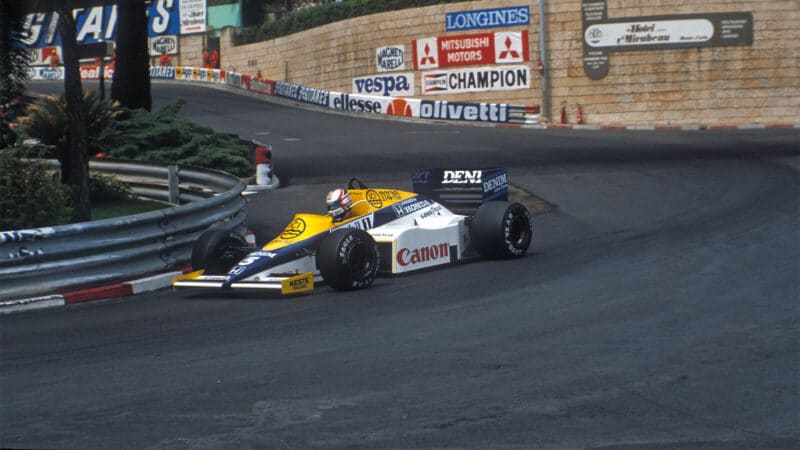
Cut from the same cloth: Mansell chases Senna through the streets of Monaco
Grand Prix Photo
Williams’ current team manager, Peter Windsor, was one of the first to spot Mansell’s ability, and provides an insight into his character when he recalls Zandvoort in 1981. “I think that was really the big point in the year. Elio had qualified with 20 minutes to go and Nigel had the 81B again and wasn’t in. Colin Chapman let him out in Elio’s car. It was one of those times when all that hard work and drama could have gone one way or the other. A moment of truth. He qualified it just three tenths off Elio’s time. It was just stunning. One of the most impressive things I’ve seen. When you looked at Moreno and Palmer in similar situations in later years, not doing that really set their careers back. Nigel just maximised that opportunity and did the job.” Nothing summarises his career better.
